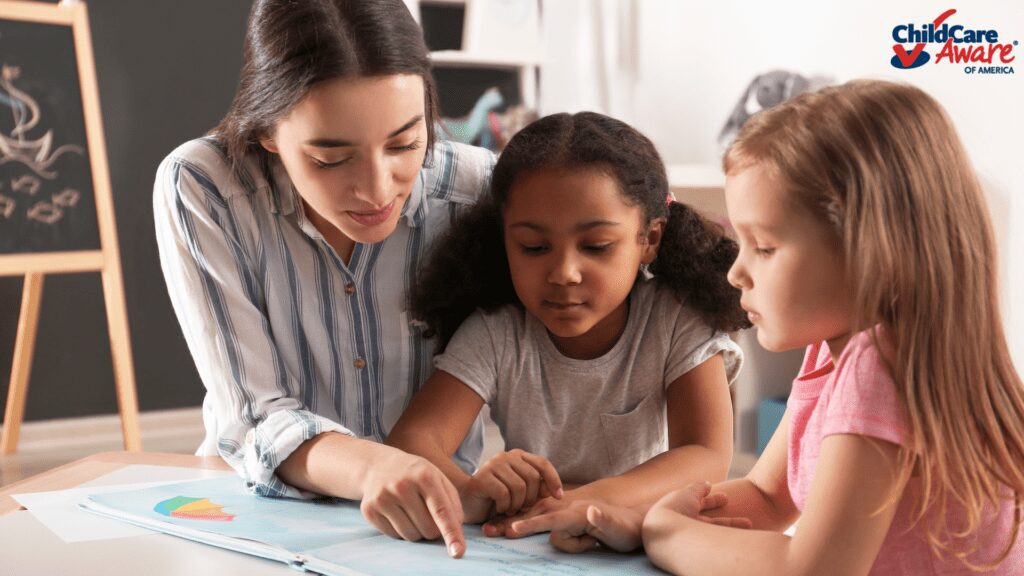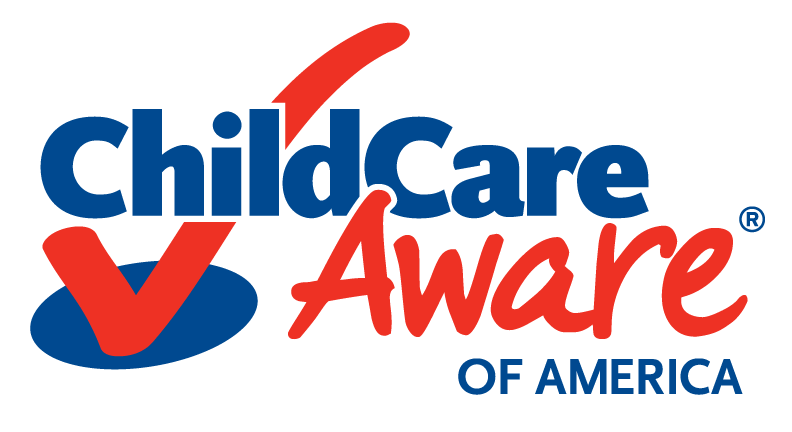
You can take steps toward providing a high-quality early care and education environment for the children in your program. Putting thought and intentional care into the following areas of your program will help you enhance program quality.
For support, guidance, or additional information on any of the topics on this page, contact your local CCR&R.
- Developmentally Appropriate Practice
Quality child care programs incorporate practices that are developmentally appropriate for the children in care. Using developmentally appropriate practices, or DAP, means understanding how children develop skills and knowledge, paying close attention to the individual developmental stages and needs of children in care, and designing an appropriate learning environment and experiences for the children based on that knowledge. Your local Child Care Resource & Referral agency (CCR&R) can help you with training and resources to incorporate DAP into your child care program.
- Curriculum
Your curriculum is your plan for how you will provide opportunities for young children to learn and practice skills that are appropriate for their ages and developmental stages. Although there are many different curriculum systems available for you to purchase, make sure to choose a curriculum that includes a focus on each domain of development:
- Language/Literacy
- Mathematics
- Science
- Social studies
- Social and emotional development
- Physical growth and development
- Motor development (gross and fine motor)
- Approaches to learning
Your curriculum should also align with your program’s mission and philosophy, have a foundation based on Developmentally Appropriate Practice (DAP), be linguistically responsive to the families and children your program serves, and allow caregivers/teachers to individualize instruction based on students’ needs.
- Family Engagement
Families are a key element in all child care programs. Building meaningful relationships with families shows you are a partner in their child’s development. Family engagement can take many forms, from encouraging families to visit at any time, to providing reliable avenues for communication (via technology or in person), to offering a variety of volunteer and participation opportunities, to providing materials and activities that families can use to continue their child’s learning at home.
Your local CCR&R can help you develop and design family engagement opportunities for the families in your child care program.
- Community Involvement
Building relationships in the community benefits child care programs, families, and the community itself. Programs can build brand awareness and give back to their local area by participating in community events like volunteer opportunities and events that ask for sponsors and donations.
Partnerships between child care and local organizations can also serve to support families and children more effectively. Think of how you can make connections with social services organizations, early intervention providers, elementary schools, libraries, community organizations, and other local resources that assist families in your area.
- Caregiver-Child Interactions
One of the most important features of your child care program is how you (and your staff, if you have them) interact with the children in your care. Caregivers in a quality child care program will speak respectfully to and about children, with back-and-forth interactions taking place throughout the day with all children, regardless of age. Caregivers should greet children warmly, comfort them as needed, frequently get down on children’s level, and find ways to provide proactive support to children rather than simply reacting to their behavior.
- Indoor Environment
Designing a high-quality indoor learning environment for children requires you to have a variety of learning centers (books, blocks, art, dramatic play, fine motor skills, etc.) and experiences for children of different ages and abilities. Think about the layout and design of your space and the type of activity you want each area of your indoor environment to encourage. There should be areas where children can engage in active play, quiet play, and rest. When arranging your play areas, consider how you can use your furniture and space to prevent unwanted behaviors while also allowing children to safely explore, practice skills, and experience sensory activities.
A crucial aspect of a quality indoor environment is your plan for keeping child care rooms, toys, equipment, and transition areas in good, clean, safe condition. This includes having a plan for regular cleaning and disinfecting as well as inspecting each area for potential safety hazards.
- Outdoor Environment
The outdoor environment and experiences you provide for children should include equipment of the right size and type for the children you serve. There should be plenty of space for children to move about and experience the fresh air. There are many safety considerations you will need to think about to provide a quality outdoor learning environment, including conducting regular inspections of the area and equipment, providing accessible equipment for all children, and ensuring that the surrounding area is secure and enclosed. Many of these practices may be required by your state or local licensing agency.
Additional measures you can take to provide a quality outdoor environment might look like providing ride-on toys, hoops, balls, and other outdoor toys for children to play with and creating opportunities for children to enjoy art, reading, science, and nature outdoors.
Additional resources are available to Child Care Aware of America members! Learn more about CCAoA membership and how to sign up to get access to these resources and others.


